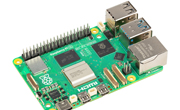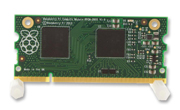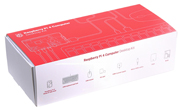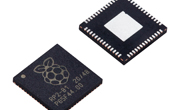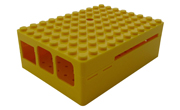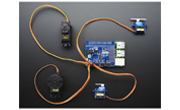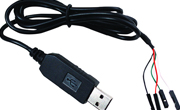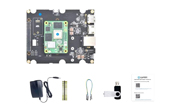How Raspberry Pi changes the electronic industry
The rise of the Raspberry Pi marked a significant turning point in the electronics industry.
With its release as a tiny but capable and affordable single-board computer (SBC), it revolutionised the SBC market, providing capabilities previously unavailable to many enthusiasts, beginners, and professionals. The first-generation Raspberry Pi was launched in 2012 as an educational platform for youngsters interested in STEM (Science, Technology, Engineering, and Mathematics). It has subsequently become a commercial success, with more than 40 million units sold, and created a market worth $1 billion, making it one of the most popular development boards in the market. The Raspberry Pi 5 Model, which is currently the Raspberry Pi Foundation’s flagship board, features a faster 2.4GHz Broadcom BCM2712, ARM Cortex-A76 CPU, and VideoCore VII GPU that supports OpenGL ES 3.1 and Vulkan 1.2, as well as better heat dissipation.
Furthermore, the Raspberry Pi Foundation has developed a versatile and robust Computer Module 4 System on Module (SoM) specifically for deep embedded applications in commercial and industrial product designs. It offers a compact, cost-effective solution for embedding Raspberry Pi capabilities into various industrial, commercial, and consumer applications.
One of the Raspberry Pi appealing characteristics is its versatility as a low-power, high-performance, and small form factor platform for various applications. It has established a whole new class of computing devices and evolved into a standard part of intelligent interfacing. Because of its affordability, reliability, and scalability, it’s perfect for a wide range of commercial and industrial applications, such as Internet of Things (IoT) monitoring, control systems and retrofitting with factory gear without a dent in a pocket. It provides an outlet for creativity regardless of background or expertise.

Applications of Raspberry Pi
The Raspberry Pi serves a broad range of users, including DIY enthusiasts, entrepreneurs, and design engineers - There’s a Raspberry Pi for everyone’s need!
A. Education
Raspberry Pi has become essential in educational settings, offering a reasonable yet capable tool for teaching programming, electronics, and information technology. Its user-friendly interface and strong community support make the device an excellent platform for youngsters to learn coding and hardware tinkering.

Raspberry Pi computers are predominantly used in schools for physical computing projects, such as internet research and document creation, rather than solely for on-screen activities. Typical school setups involve connecting Raspberry Pi to a monitor, keyboard, and mouse as replacements for desktop PCs or as permanent installations. While some school’s express concerns about integrating such open devices into their networks due to potential misuse, newer Pi models with wireless connectivity facilitate easier teacher access. Teachers generally feel comfortable with the tasks involved despite the added responsibility of managing Raspberry Pis. Ada Computer Science offers CPD training courses and resources to support teachers in effectively utilising Raspberry Pi in educational settings, including initiatives like Experience AI, developed in collaboration with Google DeepMind, to engage students in AI and machine learning. Teachers and educators can strengthen their support for physical computing in the classroom by integrating Raspberry Pi. By utilising these resources, they can equip young people with the skills needed to shape this world.
B. DIY makers
Raspberry Pi allows makers and hobbyists to develop endless possibilities for creative projects. Its flexibility will enable enthusiasts to quickly bring their ideas to reality, from retro gaming consoles to home automation systems. Projects like Magic Mirror, which utilises Raspberry Pi to create smart mirrors, showcase its innovative applications in the DIY community.
Notably, Raspberry Pi serves as a cornerstone for custom creations such as:
- Media Centre
- Home automation
- Digital photo frame
- Security System
- Smart mirrors
- Weather stations
- Smart irrigation system
- Automated animal feeder
Raspberry Pi facilitates IoT integration and enables remote device monitoring and control, data exchange, and automation. The platform supports expansion by incorporating various sensors and modules, enhancing its functionality. Beginners can kickstart their Raspberry Pi journey with the device and a reliable power supply, with recommendations tailored to the model generation. Starter kits offer a cost-effective option for acquiring necessary components. Farnell element14 community is a hub for Raspberry Pi ecosystem, fostering learning and support and encouraging community engagement. Enthusiasts can benefit from projects and resources, exchange ideas, seek advice, and improve their skills. Raspberry Pi aficionados can leverage such a collaborative ethos to continually explore new frontiers and contribute to a vibrant innovation and knowledge-sharing ecosystem.

C. Product design
Raspberry Pi acts as a catalyst for innovation among entrepreneurs and design makers. Its affordability and robust capabilities allow rapid prototyping and product development. Design engineers can use Raspberry Pi to create prototypes for IoT devices and consumer electronics, accelerating product development and reducing time-to-market.
Use Cases:- AIoT (Artificial Intelligence of Things) tasks: The Raspberry Pi’s powerful processor and memory make it suitable for rapid prototyping AI-powered devices. It can be integrated with AI/ML algorithms to perform intelligent tasks like image and speech recognition and natural language processing. These devices can collect environmental data, analyse it locally using AI models, and take appropriate actions based on the analysis.
- IoT Gateways: The Raspberry Pi is used as an IoT gateway application to connect sensors and actuators to publish and receive data from the cloud. It facilitates easy multi-protocol connectivity processes information as an edge gateway to reduce the network bandwidth demand. It provides an additional layer of security where data integrity is crucial and cannot be compromised.
- Monitoring: The Raspberry Pi’s compact size, low cost, and compatibility with sensors and actuators make it ideal for monitoring in the automation process. It can then relay the results to the user via a connected display or mobile notifications. Solutions like Kunbus Revolution Pi are already available.
- Digital Signage: Whether it’s the advertisement signage, touch screen panel mounted on a kiosk, or the target board hanging on the production floor, Raspberry Pi is gaining market share in digital signage for three simple reasons: compact size, affordability, and reliability.

Raspberry Pi is also used in daily applications like security cameras, air quality monitors, and industrial applications such as Strato-Pi. Many engineers use Raspberry Pi for rapid prototyping and proof-of-concept solutions, which provide an affordable means to verify ideas, especially in initiatives like IoT and cloud-based predictive maintenance, where upfront costs for commercial solutions may be prohibitive. The Raspberry Pi’s versatility as an IoT device and its open-source nature makes it an excellent choice for pilot tests and exploratory projects, allowing organisations to test the waters before committing to more significant investments.
D. Industrial automation
The adaptability of Raspberry Pi integration provides an affordable framework for intelligent systems, process monitoring, and custom automation solutions. Industries leverage Raspberry Pi for tasks such as:
- Computer vision/Machine vision: Raspberry Pi users can analyse videos and images with TensorFlow and Edge Impulse. TensorFlow Lite trains and deploys computer vision models like object and face identification for embedded devices like Raspberry Pi. Edge Impulse allows for building computer vision projects without extensive coding knowledge by developing and deploying machine learning models on edge devices.
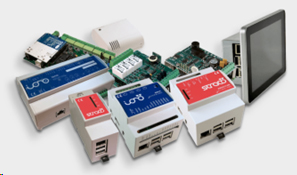
- Automation and control: The Raspberry Pi board, with several GPIOs, UART, I2C, and SPI interfaces, provides seamless connectivity to sensors, switches, relays, and tower lights, and unlocks automation system programming. You can also leverage the CSI port to connect a camera for visual inspection.
- IIoT gateways: Raspberry Pi can collect sensor data and send it to the cloud for analysis using dual-band Wi-Fi (2.4GHz and 5GHz), Bluetooth 5.0, and Bluetooth BLE. It also allows remote device control.
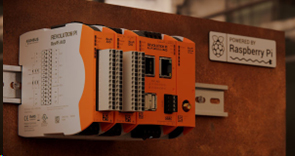
- HMI/Panel PC: The Raspberry Pi is a handy platform for industrial applications including human-machine interface (HMI), supervisory control and data acquisition (SCADA), and programmable logic controller (PLC) software. Based on Arm’s Cortex-A microprocessor cores, its multicore design enables high-speed processing necessary for real-time control and monitoring tasks. Its support for operating systems like Linux also allows for seamless integration with industrial software stacks and protocols. Raspberry Pi’s I/O ports and networking enable it to communicate with sensors, actuators, and other industrial devices for automation and control.
- Data logging: The Raspberry Pi can install standard programs or applications and perform tasks typically associated with a Personal Computer. Among its several functions is data logging, which enables recording environmental conditions, machine operation parameters, and energy consumption in CSV or spreadsheet files.
The Raspberry Pi platform is more than an affordable high-speed processing solution. Its compatibility with cloud technologies and its potential to form the foundation of an industrial data centre solidifies its position in unifying IT and OT under the Industry 4.0 framework.
Conclusion
Raspberry Pi has profoundly changed the electronics industry, expanding computing power and encouraging innovation across diverse sectors. Whether you’re a student, hobbyist, entrepreneur, or industry professional, Raspberry Pi provides a platform for unleashing your creativity and effecting substantial change in the electronic industry. It’s an ideal computing platform for accelerating your inventions, and its potential grows with every new application and use case.
As Farnell, we are pleased to have been instrumental in the huge growth and impact that the Raspberry Pi has had across the globe, helping further education of younger generations and drive the development of innovative SBC applications. The rapid adoption of the Raspberry Pi has made it the UK’s best-selling personal computer of all time. Raspberry Pi is now the world’s third most popular general-purpose computing platform, after the PC and Mac, and is used internationally by millions of young people, academics, hobbyists and industrial businesses. Whether you’re a beginner or an experienced user, our extensive range of Raspberry Pi products and accessories caters to diverse project needs, making it easier than ever to embark on your Raspberry Pi journey. Explore more
